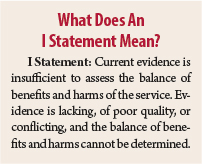For decades, dedicated members of the oncology community have fought to increase the nation’s focus on lung cancer prevention and treatment. Although smoking cessation initiatives have reduced cigarette consumption, lung cancer 5-year survival has remained stagnant at 15%, lagging far below most cancers. A group of experts has long argued that lung cancer screening would markedly increase survival, while others counter that screening is too costly and ineffective.
Speaking with The ASCO Post, Laurie Fenton Ambrose, President and CEO of the Lung Cancer Alliance (LCA), said, “We have conclusive evidence from one of the largest, most expensive randomized controlled trials carried out by the National Cancer Institute (NCI) proving that CT screening can significantly reduce lung cancer’s mortality. We have recent cost-benefit analyses looking at various populations from the commercial payer side to Medicare concluding that screening those at high risk for lung cancer is as cost-effective as screening for colon, breast, and cervical cancers. And we have responsible screening now being implemented in hospital centers all across the country. Simply put, screening is happening in the real world, by real people, for real people at risk.”
Securing Medicare coverage is essential to initiating lung cancer screening programs. On April 30, 2014, the Centers for Medicare & Medicaid Services (CMS) will be convening a Medicare Evidence Development and Coverage Advisory Committee (MEDCAC) meeting to review all the available data, prior to making its final coverage decision. Lung cancer advocates argue that a favorable CMS decision would initiate a paradigm change in the treatment of our nation’s deadliest cancer.
Public Health Imperative
The road to this pivotal CMS decision has been long and, at times, frustrating for lung cancer specialists and advocates. For one thing, no convincing data showed the benefits of screening outweighed the risks until 2010, when the results of the National Lung Screening Trial (NLST) were made public. The NLST randomly assigned more than 53,000 current and former heavy smokers aged 55 to 74 to low-dose helical CT or standard x-ray. When the trial reached its endpoint of a 20% mortality benefit in the low-dose CT arm, this effectively changed the dialogue in the screening debate.1
In light of the NLST and an updated draft recommendation from the U.S. Preventive Services Task Force (USPSTF), in September 2013, health policy expert Peter Bach, MD, wrote a formal requestor letter to CMS, stating, in part:
In line with the findings and recommendations of the medical literature related to this screening test I am requesting that CMS determine that screening for lung cancer with [low-dose CT], when conducted in centers with appropriate expertise and staffing, is reasonable and necessary for those beneficiaries who are between 55 and 74 years of age, are current smokers (or have quit smoking within the last 15 years), and have a smoking history of at least 30 pack years.2
In December 2013, the USPSTF formally issued a B recommendation on lung cancer screening.3 CMS can consider coverage of screening services if the USPSTF gives the service an A (recommends with high certainty of substantial benefit) or B (recommends with high certainty of moderate benefit, or moderate certainty of moderate to substantial benefit) recommendation. The advocacy community praised the USPSTF’s B recommendation.
“Screening people at high-risk for lung cancer is a public health imperative. And access—not barriers—to this type of lifesaving preventive service is what Medicare is all about,” stressed Ms. Fenton Ambrose.
However, a small group of doubters of low-dose CT screening still question its cost-effectiveness and clinical benefits. Earlier this year, the American Academy of Family Physicians (AAFP) released an “I” statement (see below), concluding that the evidence is insufficient to recommend for or against low-dose CT lung cancer screening.3
Doug Campos-Outcalt, MD, the AAFP liaison to the USPSTF, told The ASCO Post, “The AAFP concerns include basing such a significant recommendation on only one study; extending the recommendations beyond the study’s age range (80 instead of 75 years old) and number of screens (3 in the study; potentially up to 25 with the task force recommendations); and the likelihood that benefits will be fewer and harms greater when screening is implemented universally.”
During an interview, Benjamin Levy, MD, Director of Thoracic Medical Oncology at Beth Israel Hospital in New York, said, “Naturally, we need to be cognizant of the pitfalls of screening and be aware of some of the shortcomings including the high false-positivity rate that was seen in the NLST. But we have to put this study in the context of the staggering statistics—up to 65% of lung cancer patients present with advanced-stage disease where the goal of treatment is only palliative and extension of life with treatment is months, not years. Thus, any effort or modality that is proven to identify earlier-stage disease, where curative-intent therapy can be offered, is a game changer in my mind.”
In March 2014, a multisociety, multidisciplinary stakeholders group sent a joint consensus document to CMS, urging the agency to act on the USPSTF December recommendation.4 The signatories included the LCA, American College of Radiology, Society of Thoracic Surgeons, and 38 other professional groups. The 28-page letter noted:
Screening for current and former smokers with [low-dose CT] is the only method ever proven to reduce lung cancer mortality in this high risk population and it has also been shown to be cost effective. The Joint Societies ask that [CMS] move expeditiously in implementing broad national coverage so that individuals at high risk across the country can have access to this lifesaving benefit.
Preparing for MEDCAC
Ms. Fenton Ambrose said she was cautiously optimistic about the process ahead. “Typically, once the USPSTF gives an A or B recommendation, the process flows from that point. However, CMS conducts an independent review to analyze the USPSTF recommendation as it applies to their stakeholders. That’s why we’ve been working so hard preparing for our meeting with MEDCAC on April 30. We are anxious to show how multidisciplinary teams have been hard at work translating scientific validation into public health benefit safely, responsibly, equitably, and cost-effectively.”
Working with numerous stakeholders, the LCA developed a National Framework of Excellence for Lung Cancer Screening and Continuum of Care, best practice guidance for consumers and medical professionals interested in the screening process. Over 170 hospitals and treatment centers have adopted the National Framework, and almost 100 more are in the pipeline.
Asked about these complex logistics of implementing widespread screening, Ms. Fenton Ambrose also added, “It’s being done thoughtfully and carefully. And in addition to highlighting what constitutes best-practice care, we will be demonstrating to CMS that the lung cancer screening process is generalizable across a variety of care settings including rural, urban, academic, and community-based practices. Equally important will be conveying how smoking cessation has been embedded within screening centers of excellence and their strong interest in the collection of data to drive a quality improvement process.”
Ms. Fenton Ambrose stressed that LCA works very closely with the National Comprehensive Cancer Network (NCCN), which was the first professional society to recommend low-dose CT screening for high-risk individuals and to develop comprehensive clinical practice guidelines on lung cancer screening. “The NCCN clinical guidelines are the gold standard in oncology, and because of NCCN’s agile working structure, they are able to move swiftly to incorporate new research breakthroughs into their working guidelines,” she said.
Patient outreach is another important piece of the screening process. “We need to fully educate the public about who is a candidate for lung cancer screening and let them know that well-organized CT screening has been shown to significantly reduce the possibility of dying of lung cancer,” said Ms. Fenton Ambrose.
Dr. Levy, who was part of a team of lung cancer specialists who collaborated with ASCO on e-learning courses for the oncology community, commented about the need to educate physicians as well.
“Given the increasing role that [low-dose CT] will play for our patients, it is paramount to have Web-based educational programs to address this subject,” he said. The goal, I hope, will be to deliver a balanced discussion that includes both the benefits and risks with screening. These programs will need to reach not only oncologists but also target other disciplines, including pulmonologists and primary care physicians, as they are more likely to evaluate high-risk patients. In addition to addressing the role of CT screening, these e-learning courses will need to highlight the management and treatment decision for early-stage lung cancer. This will give viewers the idea that the algorithm doesn’t just stop once the diagnosis of lung cancer is made.”
Screening Saves Lives
Ms. Fenton Ambrose said she was buoyed by the results of a new study showing that the incidence of colon cancer, declining since the mid-1980s, plunged a further 30% last decade among Americans 50 and older as more people had colonoscopies.5 “We’re confident that lung cancer screening will produce the same reduction in incidence that colonoscopy has produced in colon cancer. Early detection works,” said Ms. Fenton Ambrose.
Dr. Levy echoed Ms. Fenton Ambrose’s optimism about screening’s effect on lung cancer incidence and survival. “I think we have to keep in mind that the NLST was the first study ever to show a significant reduction in lung cancer mortality with the use of low-dose CT for high-risk patients including those aged 55 to 80 with at least a 30 pack-year history of smoking. In addition, given that the study was stopped after only three annual CT scans, there are some who would argue that the 20% reduction in mortality might be an underestimate of the true benefit of this modality,” said Dr. Levy.
Ms. Fenton Ambrose noted an important downstream benefit of lung cancer screening: “On the other side of the continuum, lung cancer screening will give us access to biomedical samples that we’ve needed for so long. We may even be poised to see this accelerate research, giving us a better understanding of the disease at an earlier stage. This is a huge moment, certainly for the lung cancer community and for the larger cancer community. There is no downside to properly conducted lung cancer screening.” ■
Disclosure: Ms. Fenton Ambrose and Drs. Levy, Bach, and Campos-Outcalt reported no potential conflicts of interest.
References
1. The National Lung Screening Trial Research Team: Reduced lung-cancer mortality with low-dose ccomputed tomographic screening. N Engl J Med 365:395-409, 2011.
2. Bach PB: Formal request for a national coverage determination on lung cancer screening with low dose computed tomography. September 9, 2013 [letter]. Available at www.cms.gov.
3. Screening for Lung Cancer: U.S. Preventive Services Task Force Recommendation Statement. Ann Intern Med. December 31, 2013 (early release online).
4. National coverage analysis for lung cancer screening with low dose computed tomography (CAG-00439N). March 12, 2014 [letter]. Available at www.acr.org.
5. Siegel R, DeSantis C, Jemal A: Colorectal cancer statistics, 2014. CA Cancer J Clin 64:104-117, 2014.







